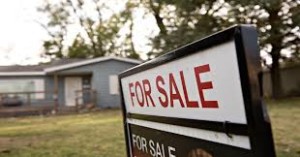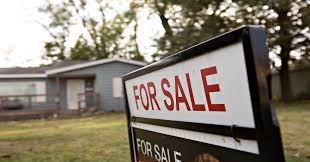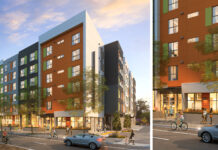 WASHINGTON: U.S. sales of existing homes fell in January from a year earlier by the most in more than three years. Would-be buyers were stymied by rising prices and a shortage of homes for sale.
WASHINGTON: U.S. sales of existing homes fell in January from a year earlier by the most in more than three years. Would-be buyers were stymied by rising prices and a shortage of homes for sale.
The National Association of Realtors said that sales dropped 3.2 percent from December to January, the second straight monthly decline, to a seasonally adjusted annual rate of 5.38 million. That was the slowest sales pace since September.
Compared with 12 months earlier, sales dropped 4.8 percent – the steepest year-over-year decline since August 2014.
A lack of available homes is holding back sales, even as Realtors report that more people are visiting open houses and demand is strong. The total supply of homes for sale dipped to 1.52 million, the fewest for any January since records began in 1999.
The low inventory levels are a legacy of a decade of boom and bust in U.S. housing. Many investors bought homes at low prices during the housing bust and are now renting them out rather than selling.
And the Realtors’ group said many homeowners are reluctant to sell at a time of rising mortgage rates because they would have to pay a higher rate on a new house, a phenomenon known as “rate lock.”
The average 30-year fixed mortgage rate reached 4.38 percent last week, the highest in nearly four years. While that is still a historically low rate, for many homeowners it is much higher than their current mortgage rate.
January’s sales stem from contracts that were signed in November or December, so they don’t reflect the sharp jump in mortgage rates since the beginning of the year. The average 30-year fixed was just below 4 percent in early January.
A sharp rise in the yield on the 10-year U.S. Treasury note has sent mortgage rates up. The 10-year yield has jumped about one-half a percentage point since the start of the year, to 2.9 percent. Investors have demanded higher yields on bonds as inflation worries have intensified. Wages rose in January from a year earlier by the most in eight years, spurring concerns that inflation pressures are building.
Those higher rates could weigh on sales in the spring, economists say. Home prices are also rising, even as sales have slipped.
The typical home price rose 5.8 percent in January from a year earlier, the NAR said, to $240,500.
“It will be an affordability conversation for many people,” said Ruben Gonzalez, chief economist at real estate broker Keller Williams.
Even a half-point increase in mortgage rates can significantly raise housing costs. For a median-priced home with an average mortgage rate, it would increase mortgage payments by $564 a year, according to Zillow, a real estate data provider. That would add up to $17,000 over a 30-year mortgage.
“While rates are still low compared to historic norms, if the rate increases scared away some would-be buyers by denting affordability, that does not bode well for the rest of the year, in which rates are only expected to go up,” said Aaron Terrazas, a senior economist at Zillow.-AP






